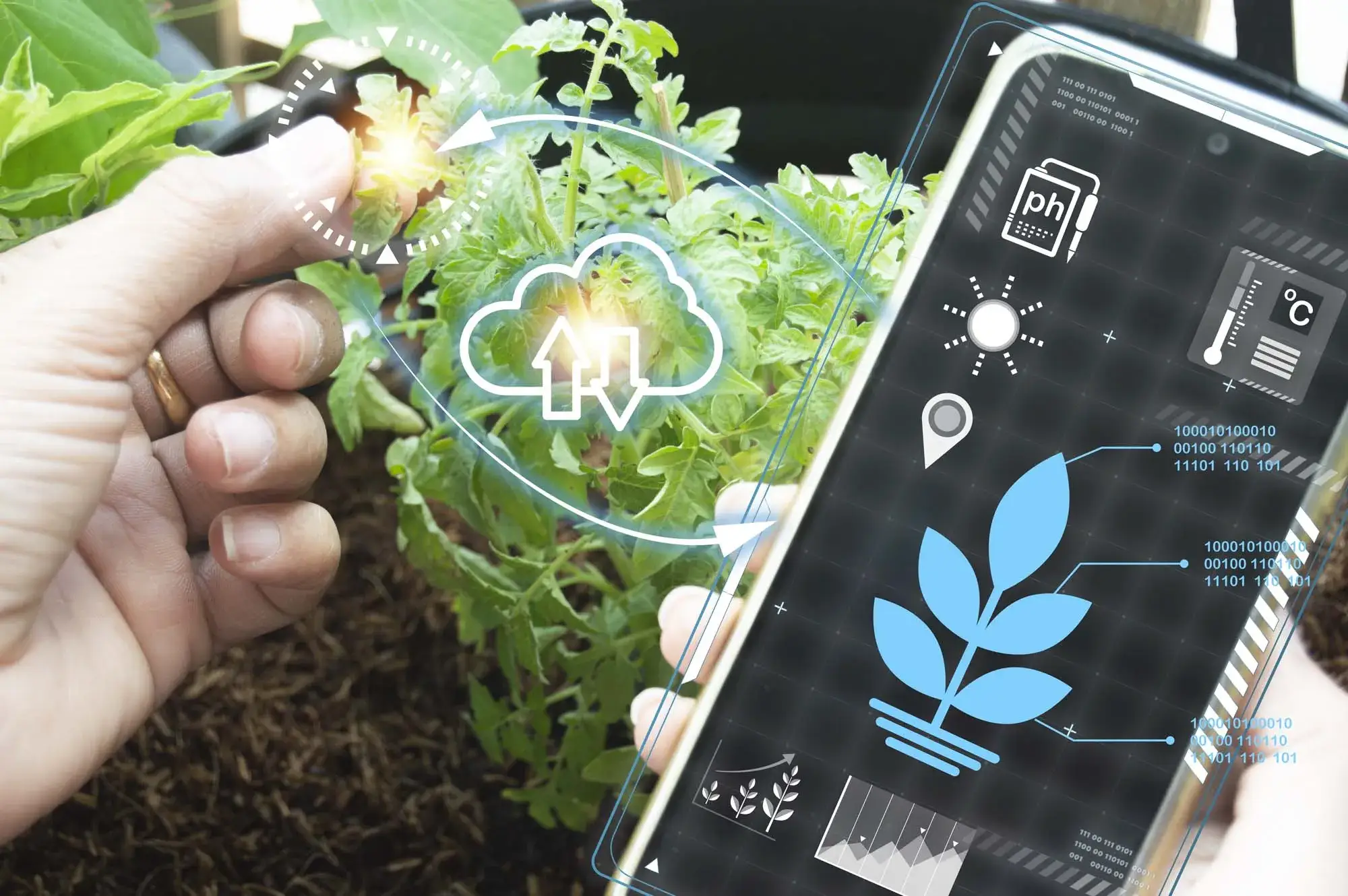
Technological advancements in smart devices have significantly improved the efficiency and precision of plant care. A key focus in this field is the application of computer vision in smart devices equipped with cameras, enabling automatic monitoring of plant health. Using advanced algorithms and machine learning techniques, these devices can identify various issues such as diseases, pests, stress symptoms, and other factors that affect plants. Data collected through cameras is then sent to users, allowing for timely responses and efficient care.
Computer vision is a branch of artificial intelligence that enables computers to "see" and interpret images and video content in a way similar to the human eye. Through image processing algorithms and machine learning, computer vision allows devices to recognize objects, analyze images, and identify specific features or changes in the environment. In the context of plants, computer vision enables smart devices to "see" and analyze plants, recognizing changes in color, shape, and texture that may indicate health problems.
Smart devices with cameras use these technologies to monitor plants in real-time. Cameras mounted on the device capture images of the plants, which then undergo image processing. The computer vision software analyzes these images and recognizes specific characteristics such as:
Changes in leaf color (yellowing or brown spots, which may indicate disease or nutrient deficiencies)
Changes in leaf texture (drying, damage caused by pests, or viral infections)
Identification of pests such as aphids, mites, or rot
Detection of structural changes in the plant (curled or dry leaves)
When the smart device recognizes these changes, it automatically sends a notification to the user via an app, alerting them to potential issues and providing recommendations for further care.
One of the key advantages of using computer vision in smart devices is the ability to detect pests and diseases early on. Many diseases and pest infestations leave specific marks on plants, such as changes in leaf color, damage to stems, or spots on fruits and vegetables. Traditionally, identifying these problems requires careful observation and expertise. However, with computers and advanced algorithms, smart devices can quickly analyze images and spot even the slightest changes that may indicate disease or the presence of pests.
If the device is equipped with the right algorithm, it can even identify specific types of pests, such as aphids or mites, which leave clearly recognizable traces on the plant. Smart devices not only recognize these harmful phenomena but also notify users in real-time, before the problem becomes severe. This allows users to take quick actions, such as applying natural pesticides, moving the plant to a safer location, or pruning damaged parts, thereby preventing further damage.
One of the key benefits of computer vision in smart devices is the ability to collect and analyze data over time. Smart devices with cameras can continuously monitor changes in the plant's appearance and analyze how it develops. This long-term analysis can help identify disease patterns or stress that may not be immediately obvious but gradually affect the plant. The device can track the rate of changes in the plant over several days or analyze the number of new damages caused by pests.
Based on this data, the device can automatically suggest recommendations to users to improve the plant’s environment (increasing humidity, reducing temperature, adding nutrients) or provide advice on specific treatments for particular issues. These devices can also be linked to apps that allow users to track all collected data, receive personalized care recommendations, and set care goals for their plants.
Smart devices with cameras and computer vision offer numerous benefits, such as:
Early Detection of Problems – The early recognition of diseases, pests, or stress in plants enables faster responses and reduces the risk of more serious damage.
Automatic Plant Health Monitoring – Devices with cameras allow users to rely on technology for monitoring their plants, saving time and effort.
Personalized Advice and Recommendations – Thanks to collected data and analysis, users receive precise and personalized care recommendations for their plants.
Ease of Use – Using smart devices with cameras is simple and intuitive, requiring minimal technical knowledge for setup and operation.
Reduced Chemical Use – Timely detection of problems allows for the use of minimal amounts of pesticides and other chemicals, contributing to more eco-friendly plant care.
Smart devices with cameras utilizing computer vision represent a significant leap in the technological evolution of plant care, allowing users to recognize and address potential problems before they become serious. By integrating advanced image analysis algorithms and machine learning, these devices can automatically monitor plant health, detect pests and diseases, and provide users with accurate, personalized care recommendations. This not only makes daily plant care easier but also reduces the need for chemical use, contributing to more environmentally sustainable plant care. By using these smart technologies, plant enthusiasts can significantly improve the quality of their plants and enjoy their healthy growth with minimal effort and time.